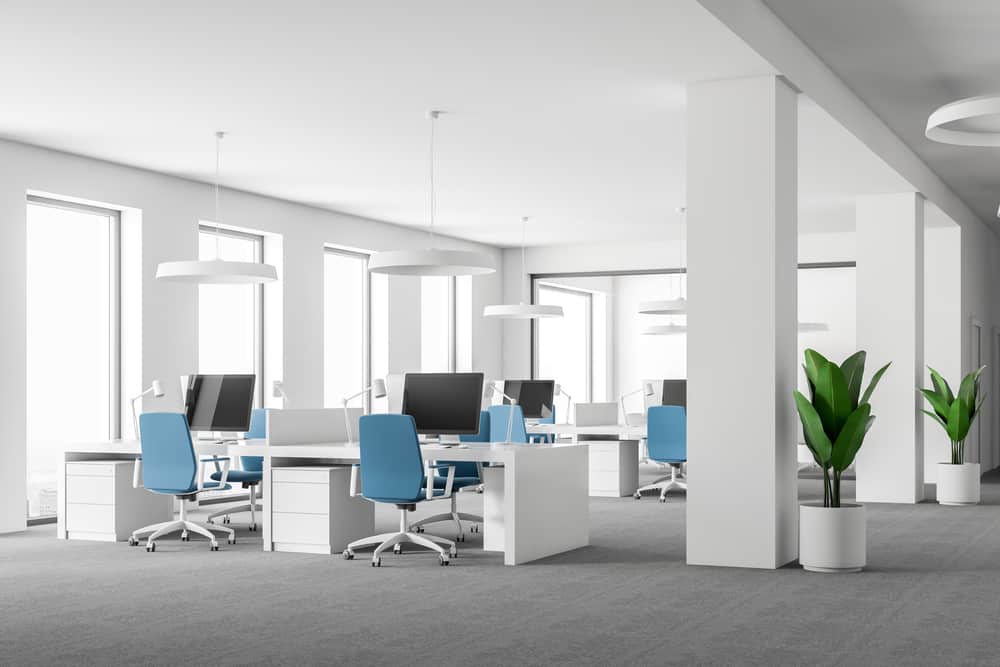
In office layout there are two main options to consider. Are you going to go for open space or closed space?
Of course, this all depends on a number of factors such as how big your company is. If your business is large and filled with dozens of employees then you will need to take into account what kind of layout will suit the amount of furniture you have and the amount of employees who work for you.
But what is the difference between open office space and closed office space?
Open Office Layout
First up, we are going to talk about open office layout. As the name suggests an open office layout is made up of open-space in which employees can see each other.
There are no enclosed spaces like cubicles where people are boxed off.
What type of jobs suit open office layout?
- Graphic Designers
- Marketers
- Media professionals
- Software Developers
- Sales
Pros:
A pro to having open office layouts is they are useful for collaboration, especially between the creative types. The open environment allows for a free-flowing communication system where employees can bounce ideas off one another.
Open office layouts are less expensive than closed as you can fit more people into the office, often alongside each other. More leg room is given to move around in, giving more space to breath. Studies have shown movement in the workplace increases productivity and overall well-being.
Cons:
Having too much open space for employees can lead to conversations occurring, which can be distracting for fellow employees trying to concentrate on tasks at hand. The noisiness of open space layout can be a factor in productivity levels dropping.
A further setback of open office layouts is the issue with very different personalities in the office. Whereas with closed office space employees are kept separated, open office spaces have all employees working closer together. If there are difficult or highly contrasting personalities in the office conflict can ensue.
Closed Office Layout
Then there’s a closed office layout. This plan is made up of the idea one person to every desk and usually involves segregation by panels or cubicles.
Closed office space very much facilitate privacy in the workforce. The type of layout also makes it easier to separate employees into different departments.
What type of jobs suit closed office layout?
- Bankers
- Telemarketers
- Auditors
- Online Support
- Data entry specialists
Pros:
The most obvious pro to having a closed office layout is that it allows for privacy between employees. Due to the privacy enabled, so too is there greater quiet.
The privacy and quiet put together can help an employee focus on their tasks at hand without distraction, a plus for emerging deadlines and work ethic. In addition, closed office layouts set out a clear hierarchy within the office, encouraging employees to work harder to gain a promotion.
Cons:
Closed office layouts are significantly more costly than open office layouts. You require more office space for closed office layouts to provide each individual with their own private space to work in. Larger offices also need more maintenance than smaller ones.
For managers and owners of companies, closed office layouts make it difficult to supervise employees as they are hidden from view. Thus, you don’t know what employees are doing as you can’t see.
Whatever type of business you have there are both advantages and disadvantages to both options. Neither are wrong, it’s a matter of what suits you and your employees best. We hope this guide has pointed you in the right direction to choosing the most suitable candidate.
When creating the most suitable office fit out for you Axis Group take into account what type of business you own and truly get a picture of the company as a whole. We create an office design plan completely tailored for you. If you’re ready to choose your office layout then call us today on 01 5240989.

